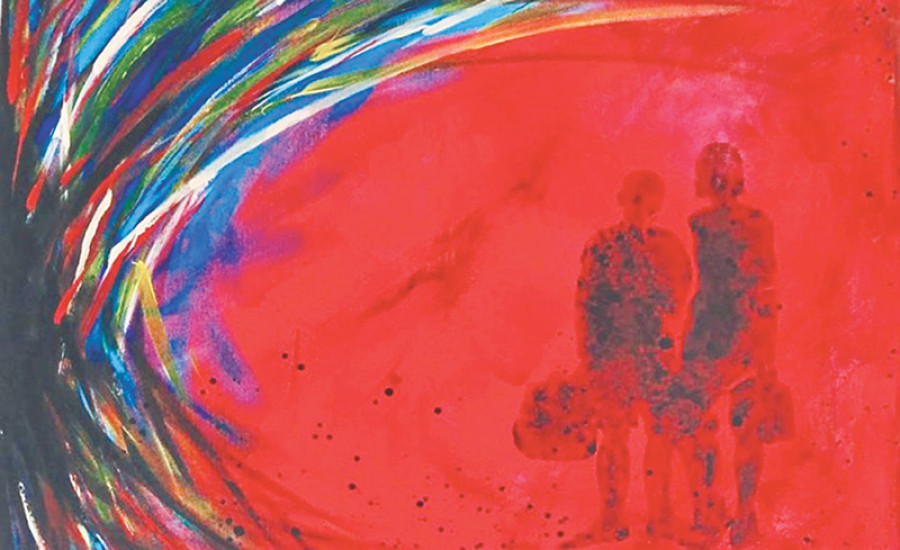Opinion
Nepali asylum seekers in Europe
Poverty, natural disasters and a political impasse are not grounds for refugee status
Shubhash Wostey
Historically, trade, higher education and employment were some of the motives that drove Nepalis to Europe. Starting in the early 1990s, cases of asylum seekers in Europe surfaced, coinciding with the restoration of democracy under a constitutional monarch in Nepal and the fleeing of thousands of Bhutanese of Nepali origin from southern Bhutan. Meanwhile, in Europe the collapse of the Eastern bloc-led regimes paved the way for democracy, economic liberalisation, increased freedom of movement and growing consolidation of human rights.
Increasing numbers
According to Eurostat records, in 1991, 40 Nepalis sought refuge for the first time in Europe (35 in Belgium and 5 in Finland). These applicants might have included those unwilling or unable to return home for fear of life or liberty due to the political struggle that led to the end of absolute monarchy in Nepal. Applicants may have also included those who applied for asylum as a means to regularise their stay in Europe, even in the absence of genuine grounds to claim asylum. By 1995, 210 Nepalis applied for asylum—135 in Belgium, 35 in the Netherlands, 25 in France and the rest in some other countries.
A markedly large number of Nepalis applied for asylum starting from 1996, when the Maoists began an armed struggle against the state and people started leaving the country. The Comprehensive Peace Accord in 2006 between the state and the Maoists brought the conflict to an end. Between 1996 and 2007, 8,070 Nepalis claimed asylum in Europe. Most applied for asylum in the UK (2,755), followed by Belgium (1,535) and Germany (1,375), among others. However, only 255 were granted refuge during this period, mostly in the Netherlands (75), Belgium (45), UK (40), France (25) and Germany (25).
Despite the end of conflict, an additional 5,295 Nepalis sought refuge between 2008 and 2016, with 1,165 seeking asylum in Belgium, 730 in the Netherlands and 670 in France. Of these, 4,000 had applied for asylum between 2011 and 2016 when Europe was overwhelmed by an unprecedented influx of people fleeing war and conflicts in Syria, Iraq, Afghanistan and some African countries. In addition to these asylum seekers, scores of citizens from relatively peaceful and stable South Asian countries also made their way to Europe, exposing themselves to numerous risks en route. As European countries forced restrictive measures such as legislative and administrative policies including tighter border controls to check the influx, the number of Nepali asylum claimants decreased annually between 2011 and 2014 (from 1,000 in 2011 to 720 in 2012, 430 in 2013 and 365 in 2014). But the figure increased after the earthquake of April 2015 (640 in 2015 and 835 in 2016).
Illegal alternatives
Many Nepalis arrive “irregularly” in Europe through the help of human smugglers, with a misplaced belief that poverty, general hopelessness due to the political impasse in Nepal, alleged political intolerance and the earthquake of 2015 would guarantee them legal stay in Europe and access to attractive benefits and jobs. Unaware of very strict international legal grounds and a rigorous process for granting “refugee status,” they seem convinced that their mere physical presence in Europe would easily earn them refugee status. In 2007, the UN Refugee Agency assessed that as Nepal made notable progress towards peace, there was no possibility of a credible fear of human rights violations for most Nepalis. The promulgation of a new constitution in 2015 was a cornerstone towards restoring peace and stability in Nepal.
Only a small number of Nepalis have been granted asylum in Europe. Of 13,575 applicants between 1991 and 2016, only 735 received asylum. The UK had received the highest number of applications (3,330), followed by Belgium (2,835), Germany (1,640) and the Netherlands (1,355).
The Netherlands granted asylum to the highest number of applicants (325), followed by France (80) and Italy (70).
Facing deportation
Of the 12,840 Nepalis whose applications were denied, most either appealed their rejection, or sought other avenues to legalise their stay, or remained in Europe illegally. As many as 10,745 were recorded as staying illegally in Europe between 2008 and 2015 (3,465 in the UK, 1,810 in Portugal and 885 in Cyprus, among others). Of these, 12,285 received orders to leave (3,465 from the UK, 2,265 from Belgium and 1,760 from Portugal, among others). By the end of 2016, European countries deported 7,485 Nepalis, mostly from the UK (4,770), Cyprus (715) and Belgium (490).
Europe will continue to attract Nepalis who dream of a better or safer future abroad as long as the protracted political instability, weak governance and rule of law, absence of post-conflict justice and lack of sustainable livelihood prospects prevail. Desperate Nepalis will continue to make their way to Europe at any cost, seizing any opportunity.
Meanwhile, Europe will continue employing increasingly restrictive measures to tackle mixed-migratory movements and the suspected abuse of its asylum provision. Regardless of these measures, human smugglers will continue to ‘offer’ extremely dangerous, irregular routes to Europe due to the lucrative nature of this business. Many South Asians, including Nepalis, travel legally to Middle Eastern countries up to Erbil in northern Iraq, where their passports ‘disappear’ upon arrival. They then proceed illegally via southern Turkey to Istanbul before heading to Bulgaria or Greece.
Poverty, unemployment, natural disasters and a political impasse are not grounds for refugee status. Seeking refuge does not automatically translate into attractive benefits in Europe. Those lacking legal status or unable to present credible grounds to remain in Europe will ultimately face deportation.
Wostey works with the United Nations in Europe; views expressed here are personal




 5.8°C Kathmandu
5.8°C Kathmandu












